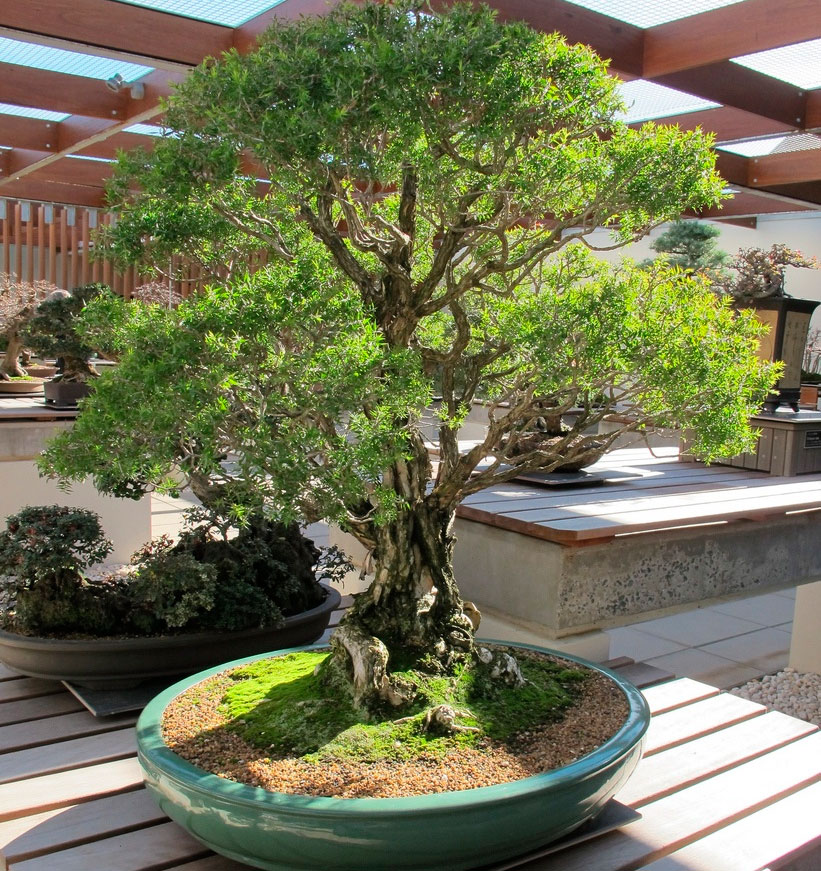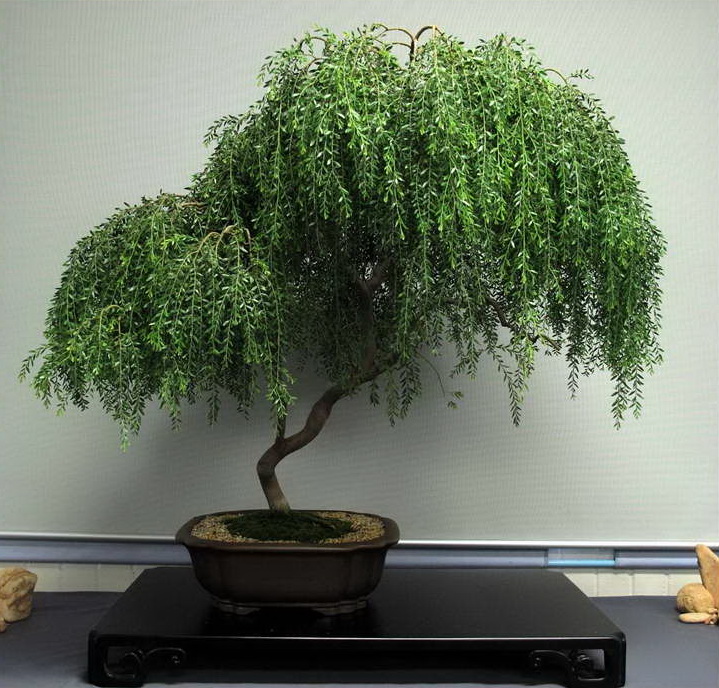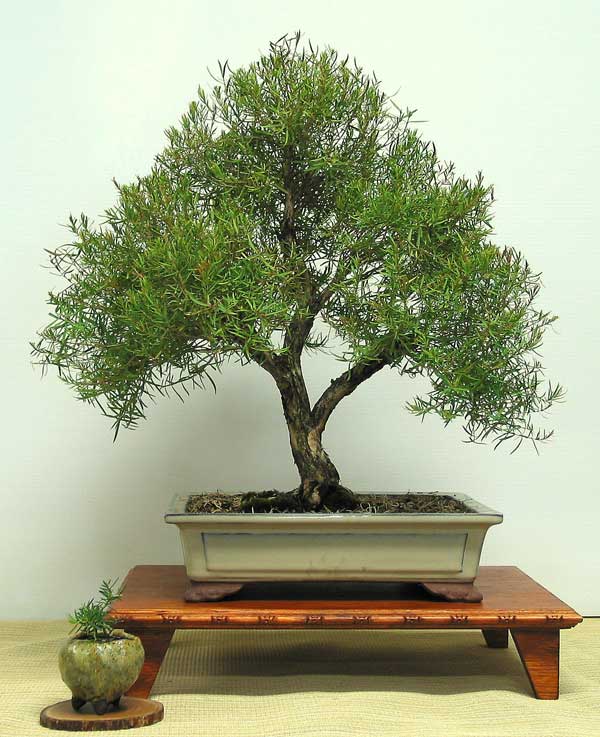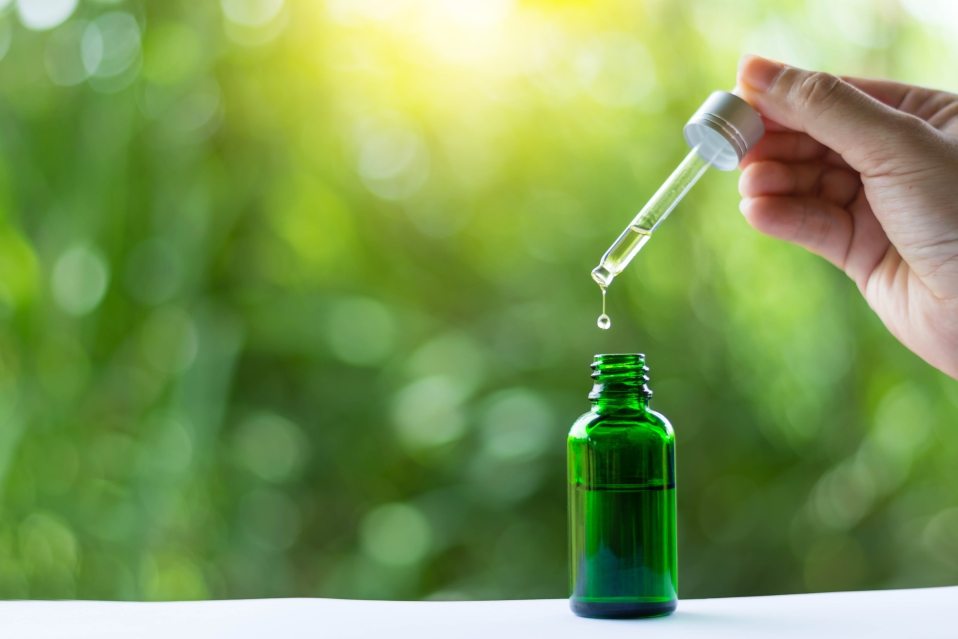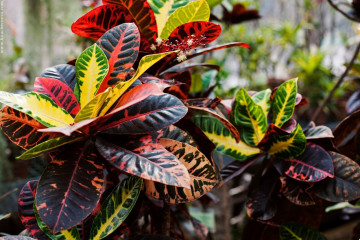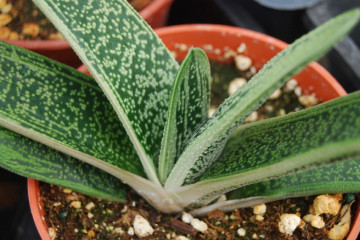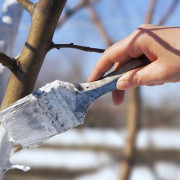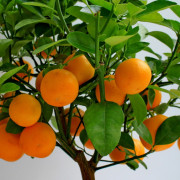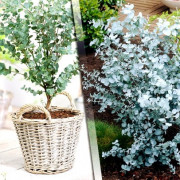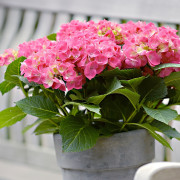Tea tree: home care and breeding methods
Content:
Melaleuca, or tea tree, belongs to the myrtle family, while, despite its name, it has nothing to do with tea. This genus unites a large number of species (about 200) of evergreen trees and shrubs.
general information
Surely every grower roughly represents what a tea tree looks like.
It is a large, beautiful evergreen plant that grows into a small, spreading tree with age. Some types of melaleuca have very short petioles, others do not have them at all.
Ovate leaflets are located through one on each side. Fragrant flowers are combined into loose cylindrical or spherical inflorescences. Flowers consist of 5 bundle bouquet of stamens. The fall of the petals occurs at the very beginning of flowering. In the future, the flowers give way to strong, closed capsules with seeds, which lean very tightly against the branches.
The tree has a rather unusual light-colored flaky bark.
Another important feature of the tea tree is its medicinal properties. The plant is rich in essential oils that actively fight microbes, viruses and fungi.
Melaleuca: home care
For home gardening, it is recommended to choose the smallest types of tea trees, as they are much easier to grow and easier to care for. For example, they include the alternate-leaved melaleuca - the smallest representative of the family that can be used to form bonsai.
The tree has elongated and narrow leaves similar to coniferous needles. According to the reviews of flower growers, the melaleuca of this species is an unpretentious plant, but for regular and abundant flowering, it must be looked after correctly.
- Watering
In the wild, melaleuca grows on the banks of rivers and in swampy places. Therefore, it needs systematic abundant watering. When the earth dries up completely, the plant may die. However, water stagnation can also damage the tree as it causes root rot.
Watering melaleuka is necessary with soft settled water. To soften hard tap water, acetic or citric acid (in a small amount) is added to it.
If the hibernation turned out to be rather cool, then the watering intensity should be slightly reduced. Watering should be done after the top layer of the substrate dries slightly.
- The soil
For growing a tea tree, a neutral or slightly acidic well-drained soil substrate is suitable.
To compose an earthen mixture, it is necessary to mix peat (2 parts) with turf soil (1 part) and sand (1 part).
- Fertilizers
The tea tree needs periodic feeding. From mid-spring to mid-autumn, it is necessary to fertilize every two weeks.
For this, mineral fertilizers are used, which are mixed with irrigation water in the proportion specified in the instructions.
- Humidity
In order to grow melaleuc, high air humidity is required. In winter, it is forbidden to leave containers with plants next to radiators.
The tree needs frequent spraying.
In addition, pallets with wet expanded clay or pebbles should be used.
Pruning
The indoor tea tree needs to be pruned regularly every year. The form of the plant after the procedure can be absolutely any, since it largely depends on the desire of the grower himself.
The tree is very susceptible to shape changes, so it can be molded both as a shrub and as a tree. In addition, pruning allows you to get rid of faded branches, which often spoil the appearance of the plant.
Young trees do not need pruning. For better branching of the bushes, they should be cut to a height of 10 centimeters.
There are only 5 types of tea tree pruning. They differ in that as a result of the use of each of them, the plant will look different.
Pruning types:
- modeling;
- easy;
- deep;
- heavy;
- under the root.
Modeling pruning is used to accelerate bud growth in young plants, improve and streamline branching, develop the "skeleton" of a tree, as well as to strengthen lateral branches and form layering. The side branches strengthen the tea bush, increase the bearing plane of the bush and help it survive low temperatures during frosty periods, which has a positive effect on yield.
Light pruning helps to increase the number of buds. This type of pruning is used for plants intended for the cultivation of this raw material - delicate buds. It is worth noting that after a certain number of procedures, the buds become coarse, and at the same time the nutritional power of the plant is significantly reduced. During this period, deep pruning will be most acceptable. For this, 10-15 cm of branches are cut from the bushes together with the foliage. This allows the tea tree to deal with stress more easily and also helps to recuperate.
Heavy pruning and root pruning is designed to rejuvenate the plant. Some tree species, upon reaching a certain size, begin to show signs of aging. In this case, light pruning methods do not help, so heavy pruning is used.
About 30 cm are cut from the plants, and if the tree is quite tall, then you can cut it to half its height. In case of a serious disease, the shrub is cut at the root, no more than 10 cm remains above the ground. This type of pruning is sometimes used before plant transplantation.
Transplant features
Young tea trees develop quite quickly and therefore need annual replanting. For adult plants, one transplant every 2-3 years is considered the norm.
With each subsequent procedure, you need to select a new pot, which exceeds the previous one in volume. If the melaleuca grows too much, it is necessary to partially prune the root system, followed by transplanting into a new container.
The composition of the soil mixture should include peat (2 parts), sand (1 part) and sod land - an earthen layer of small fallen twigs, dry leaves and grass residues (1 part).
Reproduction methods
There are two ways to propagate melaleuka in a pot: by seeds or cuttings.
Seeds
In order to propagate a tea tree by seeds, you need to do the following:
- Pour boiled water into a container and soak the seeds in it. Duration of soaking is three days. The water needs to be changed daily.
- Discard the floating seed.In a thin layer of slightly acidic soil, deepen the remaining seeds. Cover with foil or glass on top.
- Organize daily airing for half an hour.
- When watering, make sure that the earth does not dry out and sour.
- After 2-6 weeks, the first shoots should appear.
Cuttings
In the case of propagation by cuttings, the algorithm of actions is as follows:
- Choose a number of lignified shoots up to 8 cm long.
- Plant the cuttings in vermiculite (wet) and place in a well-lit area.
- Cuttings can be fed with phytohormones. They accelerate growth significantly.
- To make regular watering, to prevent a lack or excess of moisture.
Healing properties
Tea tree essential oil is an excellent antiseptic, strong anti-inflammatory and antiviral agent. It has a number of useful properties, here are some of them:
- Relieves depression and stress. Melaleuca oil activates the brain, strengthens memory and improves perception of reality.
- Antibacterial, antiviral and antifungal properties. The oil can act as an alternative to a number of cold and flu medications. It contains compounds that fight bacteria, viruses and fungi.
- Anti-inflammatory and regenerating action. Tea tree oil reduces inflammation and stimulates the white blood cells, which play an essential role in the healing process.
- Antifungal properties. The oil contains compounds that fight the growth and spread of mold on vegetables and fruits.
- Antioxidant properties. Tea tree essential oil also has antioxidant properties.
Despite the fact that the tea tree is still a rather rare phenomenon that you rarely see at home, you can still note a tendency towards its popularization. Increasingly, there are gardeners who, in search of exoticism, opt for this particular plant. Moreover, few of them, even after planting it in a pot, realize the value of this treasure.
